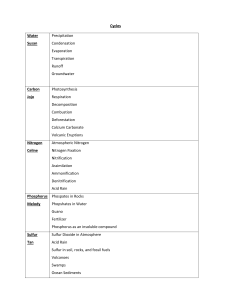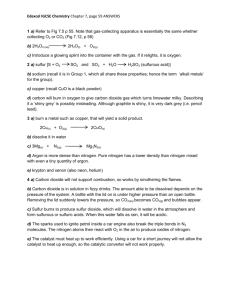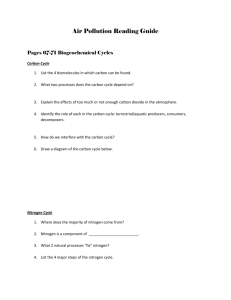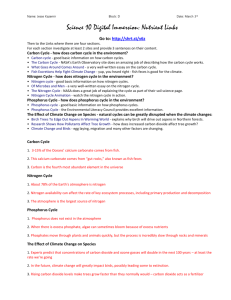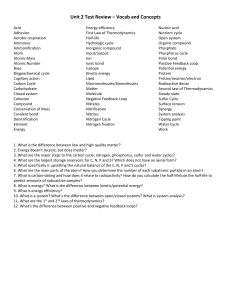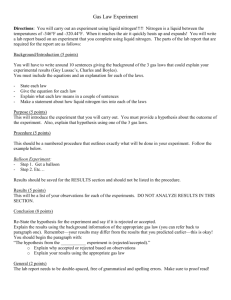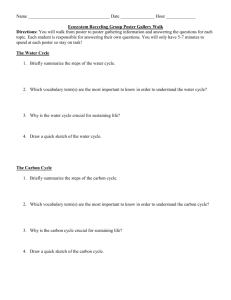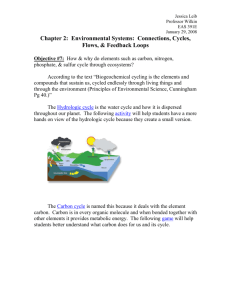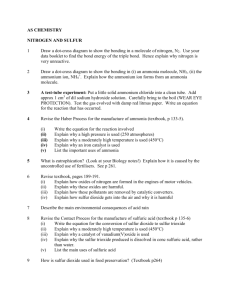AP Environmental Science Reading Guide - Miller pp 70
advertisement
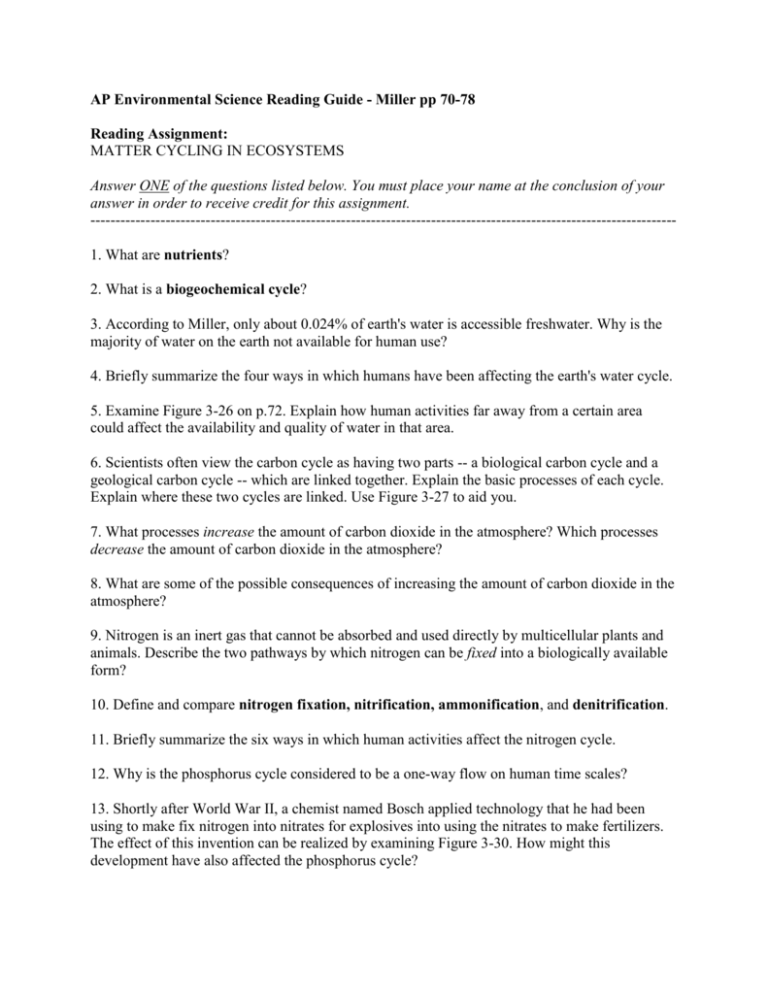
AP Environmental Science Reading Guide - Miller pp 70-78 Reading Assignment: MATTER CYCLING IN ECOSYSTEMS Answer ONE of the questions listed below. You must place your name at the conclusion of your answer in order to receive credit for this assignment. --------------------------------------------------------------------------------------------------------------------1. What are nutrients? 2. What is a biogeochemical cycle? 3. According to Miller, only about 0.024% of earth's water is accessible freshwater. Why is the majority of water on the earth not available for human use? 4. Briefly summarize the four ways in which humans have been affecting the earth's water cycle. 5. Examine Figure 3-26 on p.72. Explain how human activities far away from a certain area could affect the availability and quality of water in that area. 6. Scientists often view the carbon cycle as having two parts -- a biological carbon cycle and a geological carbon cycle -- which are linked together. Explain the basic processes of each cycle. Explain where these two cycles are linked. Use Figure 3-27 to aid you. 7. What processes increase the amount of carbon dioxide in the atmosphere? Which processes decrease the amount of carbon dioxide in the atmosphere? 8. What are some of the possible consequences of increasing the amount of carbon dioxide in the atmosphere? 9. Nitrogen is an inert gas that cannot be absorbed and used directly by multicellular plants and animals. Describe the two pathways by which nitrogen can be fixed into a biologically available form? 10. Define and compare nitrogen fixation, nitrification, ammonification, and denitrification. 11. Briefly summarize the six ways in which human activities affect the nitrogen cycle. 12. Why is the phosphorus cycle considered to be a one-way flow on human time scales? 13. Shortly after World War II, a chemist named Bosch applied technology that he had been using to make fix nitrogen into nitrates for explosives into using the nitrates to make fertilizers. The effect of this invention can be realized by examining Figure 3-30. How might this development have also affected the phosphorus cycle? 14. Why is phosphorus a limiting factor in most ecosystems? 15. Briefly summarize the four ways in which human activities affect the phosphorus cycle. 16. The sulfur cycle has an aquatic cycle and a terrestrial cycle that are linked. Describe how plants and plant-like algae drive these two cycles. 17. What geological processes link the aquatic and terrestrial sulfur cycles? 18. Both the nitrogen cycle and sulfur cycle contribute to a process called acid deposition. Describe this process and explain why the natural process of acid deposition is necessary to the cycling of these two nutrients. 19. Briefly summarize the three ways in which human activities affect the sulfur cycle. 20. What is the Gaia hypothesis? Compare and contrast the strong Gaia hypothesis and the weak Gaia hypothesis.
